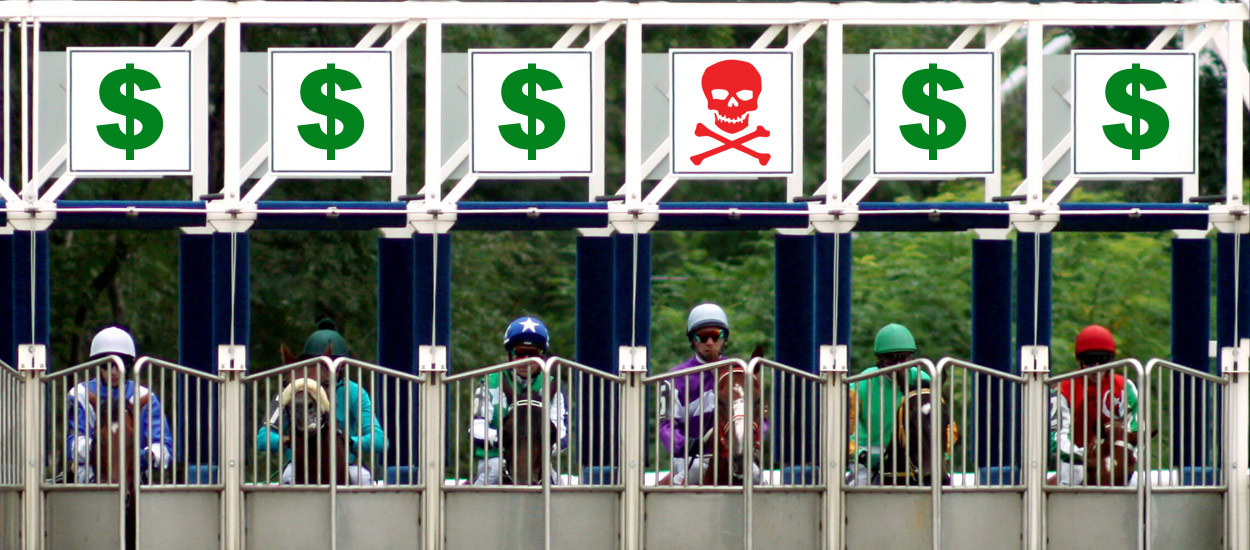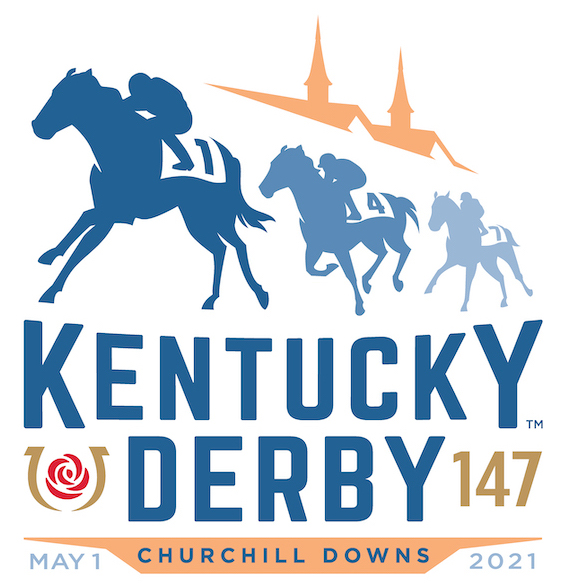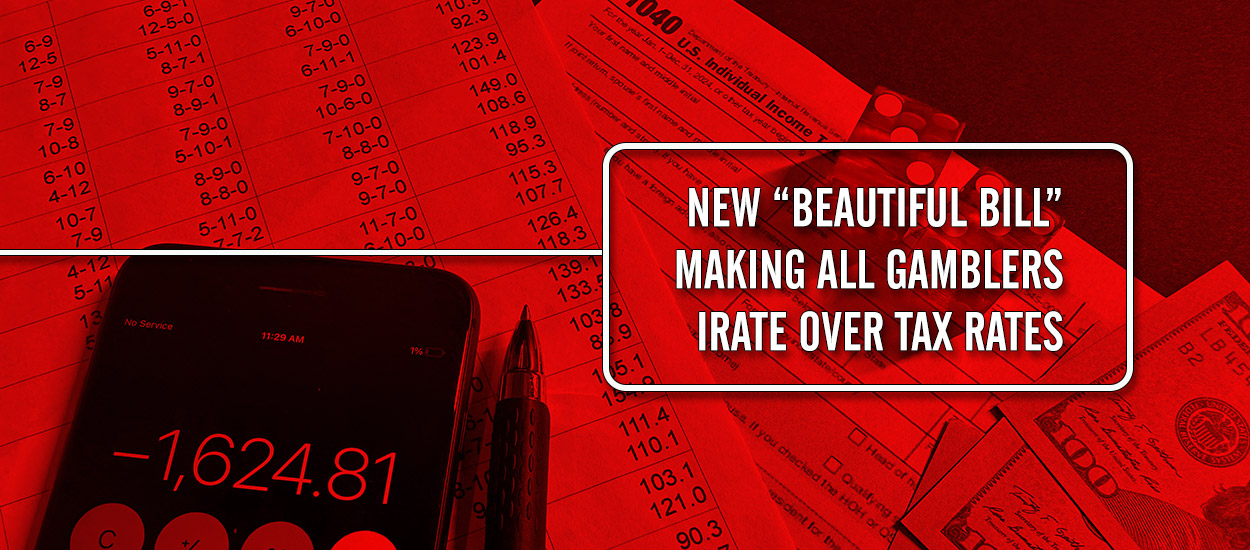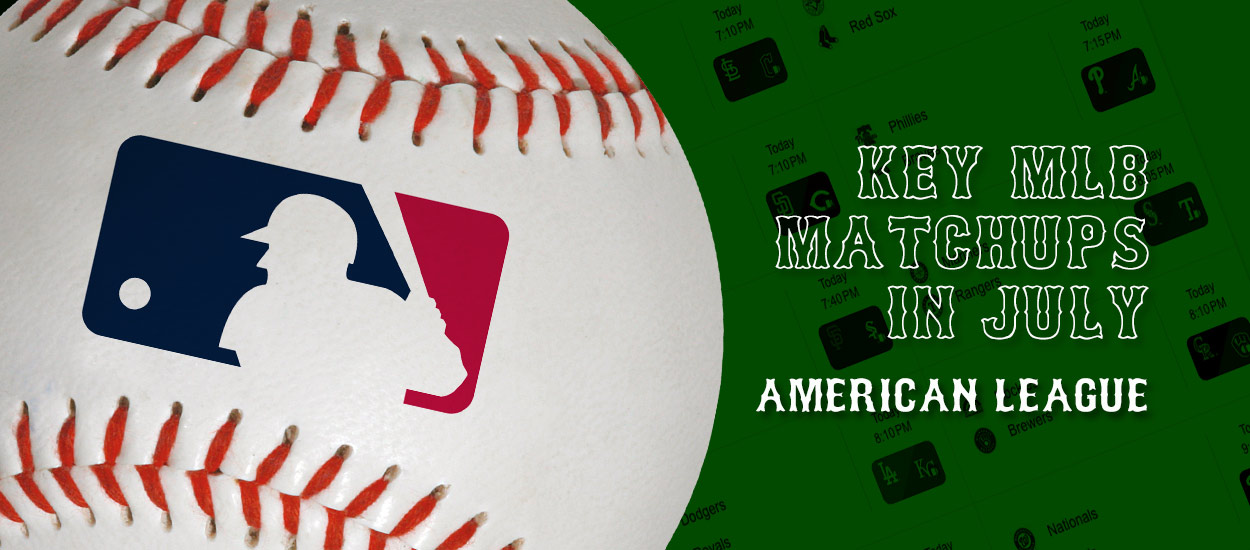Is it time for lifetime bans for trainers who don't play by the rules?
At one time horse racing was considered the sport of kings that was filled with excitement and appealed to both the rich and common folk. Starting in England, horse racing involved nobility who owned many of the horses giving the sport its nickname. The ability to wager on the outcome added to the intrigue of the sport, especially since other forms of gambling were more or less banned everywhere. Over time it became commonplace in all countries, and until the 1980s was generally the only option for gambling in the U.S. outside of Nevada and New Jersey. But what made the sport most appealing is that it seemed to be a humane sport that looked out for the welfare of the horses and jockeys.
Drugs were banned in horse racing and until the 1970s any trainer that was found to be using banned substances on horses in a race were generally shunned and given long suspensions or bans by horse racing boards. Naturally horses broke down in races for various reasons, and it was considered an unfortunate risk in the sport for horses and jockeys alike, but the rate of horse deaths was not high enough to cause major concern. Some trainers obviously disobeyed the rules and tried to get an advantage, but the penalties for getting caught drugging horses made the risk too high for most trainers to take a chance.
In 1970 the California Horse Racing Board lifted a ban on the use of Phenylbutazone (bute) in horses and trainers there started using the drug regularly. The drug, an NSAID used for the short-term treatment of pain in horses and other animals, is similar to ibuprofen or naproxen that humans use for the same purpose. In horses the drug is used as an analgesic to relieve pain from infections, sprains, tendinitis, arthritis or other musculoskeletal disorders. It also was used to reduce fever. While the board okayed the use of the drug up until the day of the race, it was still prohibited for a trainer to use the drug on race day. Eventually that ban was lifted in many jurisdictions, including California, although a few racing boards, like New York and Canada, never allowed the drug to be used on race day. Obviously, any drug that can help a horse feel more comfortable is welcomed, but bute has the tendency of masking other ailments, so often horses run races with undiagnosed conditions and inevitably it leads to breakdowns as horses don't feel the pain and continue running, even when they get injured.
In 1974, the Maryland horse racing board legalized the use of Lasix on horses and eventually other boards followed suit, although jurisdictions like New York and Canada only legalized its use on race day in the last decade. The drug is used to stop horses from bleeding in races and was thought to be a help to a horse rather than a hindrance. Until 1974, if a horse bled in a race three separate times it was barred from racing again, so this was thought to be a big help to the horse. Lasix, however, has been attributed to weight loss, dehydration and making some horse's bones more brittle. And there were some people who believed it may be a culprit in some of the horse racing deaths at Santa Anita in the last couple of years. So, starting this year, Lasix has been banned as a drug that can be used on horses on race day in all major jurisdictions and California plans to ban all race day drugs, including bute. By the time the race starts, the drug must be out of the horse's system.
While the use of drugs on horses has always been controversial, it was just accepted that trainers used them out of kindness and not to harm the horses. Nevertheless, some unscrupulous trainers chose to go a step further to gain an advantage and used stimulants and other substances including steroids to improve a horse's chances. Some trainers even used a pain reliever like fentanyl so the horse would feel no pain whatsoever. To that end trainers like Rick Dutrow, who was suspended for 10 years for 72 drug violations, including admitting to injecting the 2008 Kentucky Derby winner Big Brown with the anabolic steroid Winstrol, and Todd Pletcher, who was suspended several times for administering banned substances, brought shame and mistrust to the sport. But recent announcements of pending suspensions and possibly jail sentences for Jason Servis and Jorge Navarro caught the racing industry by surprise when it was determined just how far they were willing to go to win races. Servis, who trained Maximum Security, along with Navarro, were charged with conspiracy to manufacture, distribute and administer adulterated or misbranded performance-enhancing drugs to racehorses.
"These defendants engaged in this conduct not for the love of the sport, and certainly not out of concern for the horses, but for money," US Attorney for the Southern District of New York Geoffrey Berman said in a news release. "And it was the racehorses that paid the price for the defendants greed." According to reports, Servis doped every horse he trained, including Maximum Security, and he even raced Maximum Security on drugs in Dubai, where any drug use in horses is completely illegal. And Navarro, is accused of drugging the horses to the point of death. One noted horse he trained XY Jet, who won a major Dubai stake race in 2019, died of a heart attack in January 2020, which was attributed to a combination of the drugs and exertion from excessive training. To make matters worse it was also revealed in an investigation that the actions of a few trainers, including Navarro, went well back, and they were part of a scheme to quietly dispose of the bodies of the dead horses before it could come to the attention of the racing boards and authorities looking into the sport. And according to one source in the investigation, Navarro was the worst and least sympathetic to the horse deaths.
According to reports, Servis doped every horse he trained, including Maximum Security, and he even raced Maximum Security on drugs in Dubai, where any drug use in horses is completely illegal. And Navarro, is accused of drugging the horses to the point of death. One noted horse he trained XY Jet, who won a major Dubai stake race in 2019, died of a heart attack in January 2020, which was attributed to a combination of the drugs and exertion from excessive training. To make matters worse it was also revealed in an investigation that the actions of a few trainers, including Navarro, went well back, and they were part of a scheme to quietly dispose of the bodies of the dead horses before it could come to the attention of the racing boards and authorities looking into the sport. And according to one source in the investigation, Navarro was the worst and least sympathetic to the horse deaths.
These types of revelations harm the industry as most horse racing fans love the sport and watching horses run but have no time for any shenanigans that harm the horses. The breakdowns of horses like Ruffian, Go for Wand, Barbaro and Eight Belles were enough to turn potential new young fans away from the sport forever, and while none of those deaths were directly attributed to drug use, the types of revelations we see today will no doubt raise suspicion. Thus, most industry analysts and fans believe it is incumbent on the authorities to guarantee that the sport does everything in its power to ensure horses are never harmed and that includes the banning of trainers who treat the animals as disposable goods rather than as living entities.
The Latest Infraction So, it was greatly welcomed by the industry when California and other major states announced that as of 2021, they were banning the use of any race day drugs to help ensure that the sport stays as safe as possible for the horses. It is also why few people have sympathy for Bob Baffert, who may face a long suspension after it was revealed that Medina Spirit tested positive for the anti-inflammatory drug betamethasone. This wouldn't be Baffert's first suspension either. He was recently banned in Arkansas after Charlatan tested positive for a numbing agent in the 2020 Arkansas Derby and it was reported that in his career, he was reprimanded or suspended 29 times for illegal drug use. To make matters worse, Baffert has always come up with excuses, denials, passing blame and most recently even blaming cancel culture for his suspensions. And his excuse for the 21 picograms of betamethasone in the system of Medina Spirit is so absurd, that it is almost laughable.
So, it was greatly welcomed by the industry when California and other major states announced that as of 2021, they were banning the use of any race day drugs to help ensure that the sport stays as safe as possible for the horses. It is also why few people have sympathy for Bob Baffert, who may face a long suspension after it was revealed that Medina Spirit tested positive for the anti-inflammatory drug betamethasone. This wouldn't be Baffert's first suspension either. He was recently banned in Arkansas after Charlatan tested positive for a numbing agent in the 2020 Arkansas Derby and it was reported that in his career, he was reprimanded or suspended 29 times for illegal drug use. To make matters worse, Baffert has always come up with excuses, denials, passing blame and most recently even blaming cancel culture for his suspensions. And his excuse for the 21 picograms of betamethasone in the system of Medina Spirit is so absurd, that it is almost laughable.
According to Baffert a groomer urinated on hay after taking cough syrup and Medina Spirit ate that hay causing the positive test. And like excuses made by Olympic athletes who test positive, blaming things like the water or being "slipped" a pill they didn't know what they were taking, never work. It's up to the trainer to make sure that everything is on the up and up and after the deaths of 31 horses at Santa Anita in 2019 the industry just wants to know that the horses are safe from unscrupulous trainers.
Follow the lead of the UK
Many in America feel the best way to accomplish this is to just adapt the policy that the British Horse Racing Authority (BHA) has and have a strict zero tolerance policy for drug use of any sort. The BHA's rules on doping are clear, and while they don't publish a list of all prohibited drugs, they make it clear that if there is doubt - then don't use it. The BHA's definition of a banned substance is defined as "any medication or supplement (including herbal substances) that has, or claims to have, an effect on horses unless there is specific advice from the BHA Equine Health and Welfare Department that states otherwise."
The BHA's definition of a banned substance is defined as "any medication or supplement (including herbal substances) that has, or claims to have, an effect on horses unless there is specific advice from the BHA Equine Health and Welfare Department that states otherwise."
And it can't be ignored that breakdowns in horse races are far less common in the UK than they are in North America. Because the industry is so vibrant and strict in the UK, the industry wants to make sure horses and bettors are protected. And anyone who is caught using drugs will get an immediate suspension and a subsequent discovery will lead to a lifetime ban. The general feeling is that it is better to be safe than sorry. Horses often get put down in the UK as a result of an awkward fall in steeplechase racing, and many pundits want steeplechase races gone forever as well to protect the horses, but that's an issue for a different article.
So once again a feel-good story in horse racing is followed by another one that takes the industry down two pegs. It is probably impossible to ban trainers or other horse racing personnel from trying to get a leg up on their competitors, but the short bans, fines and most often acquittals that are usually seen in North America do nothing but give the industry a bad name. If North American horse racing is ever going to regain its prestige as the sport of kings, it needs to clean up its image and adapting the British Horse Racing's policy of zero tolerance is likely the best starting point. And perhaps, to stress the point that the industry cares about the animals, they can begin with a very long ban on training for Baffert if the B sample comes back positive, rather than just a 15-day ban in one jurisdiction.
Read insights from Hartley Henderson every week here at OSGA and check out Hartley's RUMOR MILL!







































